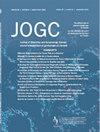加拿大双胎妊娠中的延迟脐带钳夹:全国做法调查。
IF 2
Q2 OBSTETRICS & GYNECOLOGY
引用次数: 0
摘要
背景:指南建议延迟脐带夹闭(DCC),即在分娩后至少延迟 30 秒钟夹闭脐带,这对单胎早产有显著益处。目的:本研究旨在评估加拿大三级医院目前报告的双胎妊娠 DCC 实践。方法:向与加拿大新生儿和早产儿网络(CNN/CPTBN)相关的新生儿科医生和产科医生调查人员发放了一份网络调查问卷,这些调查人员负责管理产科和新生儿科。结果:调查地点的回复率为 93%(28/30 个地点),其中新生儿科医生的回复率为 83%(25/30),产科医生的回复率为 56%(17/30)。大多数医疗中心都制定了针对双胎妊娠的本地方案(产科医生 13/17,新生儿科医生 21/25)。虽然所有中心都对二绒毛膜双胎进行了顺产,但对单绒毛膜双胎则有所不同,56%的新生儿科医生和 65% 的产科医生进行了顺产。在剖宫产过程中,大多数产科医生(76.5%)将头胎婴儿放在母亲的大腿上。新生儿科医生的做法各不相同,32%的医生将婴儿放在母亲的腹部,32%的医生将婴儿放在母亲的大腿上,28%的医生将婴儿抱在会阴部的高度。在禁忌症方面,包括产后出血风险和绒毛插入脐带的风险,观察到了不同的意见。结论:据报道,在 CNN/CPTBN 中心,大多数双胎分娩都采用了脐带绕颈术,但在实践中存在很大差异,尤其是在采用脐带绕颈术的双胎的特征方面。背景:指南建议延迟脐带钳夹(DCC),即在分娩后至少延迟 30 秒钳夹脐带,这对早产的单胎妊娠有显著的益处。目的:本研究旨在评估加拿大三级医院目前针对双胎妊娠的 CRC 实践。方法:向与加拿大新生儿和早产儿网络(CNN/CPTBN)有联系的新生儿科医生和产科研究人员发放了一份在线调查问卷,这些网络管理着新生儿和产科单位。结果:各中心的回复率为 93%(28/30 个中心):新生儿科医师的回复率为 83%(25/30 个中心),产科医师的回复率为 56%(17/30 个中心)。大多数中心都有针对双胎妊娠的本地方案(产科医生 13/17,新生儿科医生 21/25)。虽然所有中心都对双胎妊娠实施了 CRC,但对单胎妊娠实施 CRC 的情况有所不同,56% 的新生儿科医生和 65% 的产科医生实施了 CRC。在剖腹产过程中,大多数产科医生(76.5%)会将头胎婴儿放在母亲的大腿上。新生儿科医生的做法各不相同:32%的医生将婴儿放在母亲的腹部,32%的医生将婴儿放在母亲的大腿上,28%的医生将婴儿抱在会阴部。对于禁忌症,尤其是产后出血的风险和脐带绒毛插入的禁忌症,医生们的意见不一。结论:在 CNN/CPTBN 中心,大多数双胎分娩都要进行 CRC。然而,在实践中存在很大差异,特别是与进行 CRC 的双胎的特征有关。未来的研究应重点关注双胞胎脐带钳夹的最佳管理,以规范操作并最大限度地提高效益。本文章由计算机程序翻译,如有差异,请以英文原文为准。
Deferred Cord Clamping in Twin Pregnancies Across Canada: A National Survey of Practices
Objective
Guidelines recommending deferred cord clamping (DCC), delaying cord clamping for at least 30 seconds post-birth, have shown significant benefits in preterm singleton births. However, evidence supporting DCC in twins is scarce due to limited trial data, leading to practice variations. This study aims to assess current reported DCC practices for twin pregnancies in tertiary hospitals across Canada.
Methods
A web-based survey was distributed to neonatologists and obstetrician investigators associated with the Canadian Neonatal and Preterm Birth Networks operating maternity and neonatal units.
Results
The site response rate was 93% (28/30 sites), with 83% (25/30) for neonatologists and 56% (17/30) for obstetricians. The majority had a local protocol for twin pregnancies (obstetricians 13/17, neonatologists 21/25). While all centres practised DCC in dichorionic-diamniotic twins, a difference was noted for monochorionic-diamniotic twins, with 56% of neonatologists and 65% of obstetricians performing DCC. During cesarean delivery, most obstetricians (76.5%) placed the firstborn on the mother’s thighs. Neonatologists varied in their practices, with 32% placing the baby on the mother’s abdomen, 32% on the mother’s thighs, and 28% holding the baby at the height of the perineum. Divergent opinions were observed regarding contraindications, including risks of postpartum hemorrhage and velamentous cord insertion.
Conclusions
DCC is reported to be practised in most twin deliveries among Canadian Neonatal and Preterm Birth Network centres. However, there are wide variations in practice, especially concerning the characteristics of the twins in which DCC is performed. Future research should investigate optimal cord clamping management in twins to standardize practices and maximize benefits.
求助全文
通过发布文献求助,成功后即可免费获取论文全文。
去求助
来源期刊

Journal of obstetrics and gynaecology Canada
OBSTETRICS & GYNECOLOGY-
CiteScore
3.30
自引率
5.60%
发文量
302
审稿时长
32 days
期刊介绍:
Journal of Obstetrics and Gynaecology Canada (JOGC) is Canada"s peer-reviewed journal of obstetrics, gynaecology, and women"s health. Each monthly issue contains original research articles, reviews, case reports, commentaries, and editorials on all aspects of reproductive health. JOGC is the original publication source of evidence-based clinical guidelines, committee opinions, and policy statements that derive from standing or ad hoc committees of the Society of Obstetricians and Gynaecologists of Canada. JOGC is included in the National Library of Medicine"s MEDLINE database, and abstracts from JOGC are accessible on PubMed.
 求助内容:
求助内容: 应助结果提醒方式:
应助结果提醒方式:


